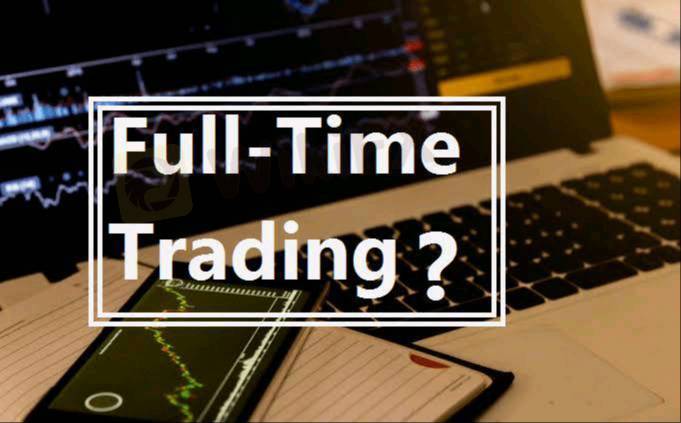
2025-01-21 20:10
IndustryA Historical Account of Exchange Rate Mechanisms
#firstdealofthenewyearFATEEMAH
The foreign exchange market has experienced substantial changes in its exchange rate mechanisms, shifting from fixed to floating systems. This transition has affected currency valuation, trading, and regulation. Let's explore the details of this transformation:
The Era of Fixed Exchange Rates: Under the 1944-1971 Bretton Woods Agreement, major currencies were pegged to the U.S. dollar, convertible to gold at a fixed rate. The system aimed to foster stability, curb speculation, and facilitate international trade but ultimately collapsed due to its rigidity and growing economic imbalances.
Transitioning to Floating Exchange Rates: The subsequent Smithsonian Agreement (1971-1973) sought to reinstate fixed exchange rates with wider fluctuation bands. However, persisting economic instability led to the widespread embrace of floating exchange rates, wherein market forces like supply and demand determine currency values.
Contemporary Floating Exchange Rate System: Most major currencies currently operate under a floating exchange rate regime. This empowers central banks to implement independent monetary policies and provides more adaptability in addressing economic challenges. Key benefits include autonomy, shock absorption, and reduced currency manipulation risks.
Exchange Rate Mechanisms in Developing Economies: Although many emerging countries have adopted floating exchange rates, some employ hybrid systems like managed floats or currency pegs. These mechanisms strive to balance the need for stability with flexibility required for economic growth.
Impacts on Forex Market Dynamics: The shift from fixed to floating exchange rates has altered forex market dynamics. Floating rates have generated increased market volatility, demanding more advanced risk management tools and strategies. Traders must diligently monitor economic indicators, political developments, and central bank policies to anticipate currency fluctuations.
Regulatory Implications: Transitioning to floating exchange rates has presented new regulatory challenges. Central banks and governments must establish effective monetary policies to promote stability without hindering market efficiency. Regulatory bodies also need to address potential risks stemming from high-frequency trading, algorithmic trading, and market manipulation.
Future Trajectories: As the global economy evolves, exchange rate mechanisms will continue adapting. Possible developments include increased regional cooperation, digital currency adoption, or custom hybrid exchange rate systems addressing specific economic and geopolitical contexts.
In summary, the foreign exchange market's transition from fixed to floating exchange rate mechanisms has considerably influenced market dynamics, regulatory oversight, and trader strategies. The forex market and governing exchange rate mechanisms will continue evolving alongside the global economy.
Like 0
FX4002174254
Trader
Hot content
Industry
Event-A comment a day,Keep rewards worthy up to$27
Industry
Nigeria Event Giveaway-Win₦5000 Mobilephone Credit
Industry
Nigeria Event Giveaway-Win ₦2500 MobilePhoneCredit
Industry
South Africa Event-Come&Win 240ZAR Phone Credit
Industry
Nigeria Event-Discuss Forex&Win2500NGN PhoneCredit
Industry
[Nigeria Event]Discuss&win 2500 Naira Phone Credit
Forum category

Platform

Exhibition

Agent

Recruitment

EA

Industry

Market

Index
A Historical Account of Exchange Rate Mechanisms
 Pakistan | 2025-01-21 20:10
Pakistan | 2025-01-21 20:10#firstdealofthenewyearFATEEMAH
The foreign exchange market has experienced substantial changes in its exchange rate mechanisms, shifting from fixed to floating systems. This transition has affected currency valuation, trading, and regulation. Let's explore the details of this transformation:
The Era of Fixed Exchange Rates: Under the 1944-1971 Bretton Woods Agreement, major currencies were pegged to the U.S. dollar, convertible to gold at a fixed rate. The system aimed to foster stability, curb speculation, and facilitate international trade but ultimately collapsed due to its rigidity and growing economic imbalances.
Transitioning to Floating Exchange Rates: The subsequent Smithsonian Agreement (1971-1973) sought to reinstate fixed exchange rates with wider fluctuation bands. However, persisting economic instability led to the widespread embrace of floating exchange rates, wherein market forces like supply and demand determine currency values.
Contemporary Floating Exchange Rate System: Most major currencies currently operate under a floating exchange rate regime. This empowers central banks to implement independent monetary policies and provides more adaptability in addressing economic challenges. Key benefits include autonomy, shock absorption, and reduced currency manipulation risks.
Exchange Rate Mechanisms in Developing Economies: Although many emerging countries have adopted floating exchange rates, some employ hybrid systems like managed floats or currency pegs. These mechanisms strive to balance the need for stability with flexibility required for economic growth.
Impacts on Forex Market Dynamics: The shift from fixed to floating exchange rates has altered forex market dynamics. Floating rates have generated increased market volatility, demanding more advanced risk management tools and strategies. Traders must diligently monitor economic indicators, political developments, and central bank policies to anticipate currency fluctuations.
Regulatory Implications: Transitioning to floating exchange rates has presented new regulatory challenges. Central banks and governments must establish effective monetary policies to promote stability without hindering market efficiency. Regulatory bodies also need to address potential risks stemming from high-frequency trading, algorithmic trading, and market manipulation.
Future Trajectories: As the global economy evolves, exchange rate mechanisms will continue adapting. Possible developments include increased regional cooperation, digital currency adoption, or custom hybrid exchange rate systems addressing specific economic and geopolitical contexts.
In summary, the foreign exchange market's transition from fixed to floating exchange rate mechanisms has considerably influenced market dynamics, regulatory oversight, and trader strategies. The forex market and governing exchange rate mechanisms will continue evolving alongside the global economy.
Like 0
I want to comment, too
Submit
0Comments

There is no comment yet. Make the first one.

Submit
There is no comment yet. Make the first one.